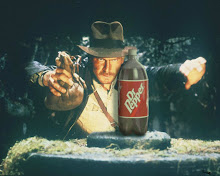
Double click on the image to make it larger.
Morse code uses a sequence of short and long elements to represent a message. The short and long elements can be formed by sounds, marks, or flashes with a flashlight and are commonly known as "dots" and "dashes" or "dits" and "dahs".
It was originally created for Samuel Morse's electric telegraph in the early 1840s, and Morse code was also extensively used for early radio communication beginning in the 1890s. For the first half of the twentieth century, the majority of high-speed international communication was conducted in Morse code, using telegraph lines, undersea cables, and radio circuits.
The most popular current use of Morse code is by amateur radio operators. Pilots and air traffic controllers are usually familiar with Morse code and need to have a basic understanding.
The book Swallows and Amazons, which you can get on DVD, has a group of children going camping on an island and using Morse code and also semaphore, to communicate with each other.
Monday, February 9, 2009
Morse Code
Posted by
Leslie
at
5:12 PM
1 comments
![]()
Saturday, February 7, 2009
Hot enough to fry an egg

This is how hot it is in Australia's capital city right now. But, is it hot enough to fry an egg on the sidewalk? In cooking terms, an egg needs a temperature of 158F to cook, and most sidewalks do not get up to that temperature. The egg, when cracked open on the cement, cools it down. Black macadam sidewalks are hotter than gray ones, and using metal as well, can raise the temperature. So you could try using aluminium foil on top of the sidewalk surface.
In cooking terms, an egg needs a temperature of 158F to cook, and most sidewalks do not get up to that temperature. The egg, when cracked open on the cement, cools it down. Black macadam sidewalks are hotter than gray ones, and using metal as well, can raise the temperature. So you could try using aluminium foil on top of the sidewalk surface.
And lastly, you can place a pane of glass under a frypan, on top of the sidewalk or cement. For good measure, you can place another pane of glass on top of egg in the frypan.
Now, another way to try to cook an egg, is on the bonnet of a car that has been outside on a very hot day. Don't use a teacher's car, you're likely to get detention.
Posted by
Leslie
at
10:55 AM
2
comments
![]()









